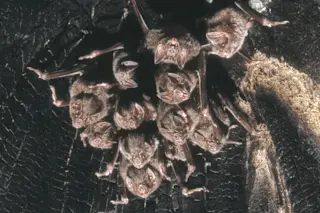Much like us, vampire bats take their social circles pretty seriously. But instead of hanging out on the couch or catching up over a beer, these mammals are more likely to bunch up to stay warm or nibble at each other's fur as a form of social grooming. In rare cases, they'll even share a meal — though, in appropriately gruesome fashion, this involves regurgitating blood into each other's mouths.
Through their time together, however, vampire bats might also be sharing something even more intimate. Researchers reported that the bats' gut microbiomes became more similar the more they engaged in such social behaviors with each other, according to a study published this month in Biology Letters. "Their saliva is already all over them," said Gerald Carter, one of the study's authors and a professor of evolution, ecology and organismal biology at Ohio State University, in a press release. "They're spending ...















